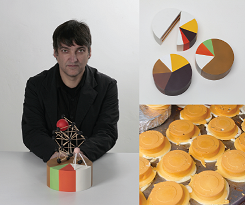Design revamps traditional concepts of Taiwanese street food
src="https://www-ws.gov.taipei/001/Upload/public/MMO/ENGCULTURE/News-WDCFP-1.jpg" mmoid="174131812"/>
2016 World Design Capital (WDC) Taipei initiated a food project that examines, overturns, and redefines Taiwanese street food from a different cultural and experiment perspective at the Taiwan Design Museum inside the Songshan Cultural and Creative Park.
It’s one among the six international collaborative projects chosen from 49 feasible and innovative proposals in resolving urban issues of Taipei. It’s expected through the international collaborations will help to build Taipei as an exemplary city where social design is a common scene existing in its urban construction.
Titled The Food Project, the event is planned and executed by Alice Wang Design, a studio known for their capability of applying social phenomenon and issues to product developing. It’s introduced by several subcategories: Edible Tales, Street Food Evolution, Big Bento Redo, andTrike Writer.
src="https://www-ws.gov.taipei/001/Upload/public/MMO/ENGCULTURE/News-WDCFP-2.jpg" mmoid="174131812"/>
The project conveys the idea that in the reign of culinary, design not merely focuses on the appearance, but closely interrelates with agriculture, nutrition, environmentalism, and cultural development. In one way, the event is aimed to inspire the public to continue exploring and developing Taiwan’s culinary culture, including the material supply chain, consumers’ behavior, and future trends as well.
Of all, Street Food Evolution highlights famed English food design artists Bompas & Parr and Spanish food designer Marti Guixe. Both of them overwhelmed Taiwanese street snacks through unique concepts respectively and presented the conventional food in a not that conventional way.
Sausage can be easily found in our daily lives, from breakfast to night markets, said Hsieh, Pei-ni, Commissioner of Taipei’s Cultural Department. Bompas & Parr, however, introduced more possibilities to the common dish, allowing an imagination space for the public, she said.

Exhibition Edible Tales is divided into four interdisciplinary topics: First We Eat, And We Play, Then We Worry, and Next We Wonder. Some exhibits focus on developing the playful aspect of food, while some explore the social responsibilities behind culinary, and still some convey expectations toward the future of food and its controversial trends as well.
More information is available at wdc2016.taipei or https://www.facebook.com/taipeidesign/.

![Taiwan.gov.tw [ open a new window]](/images/egov.png)
